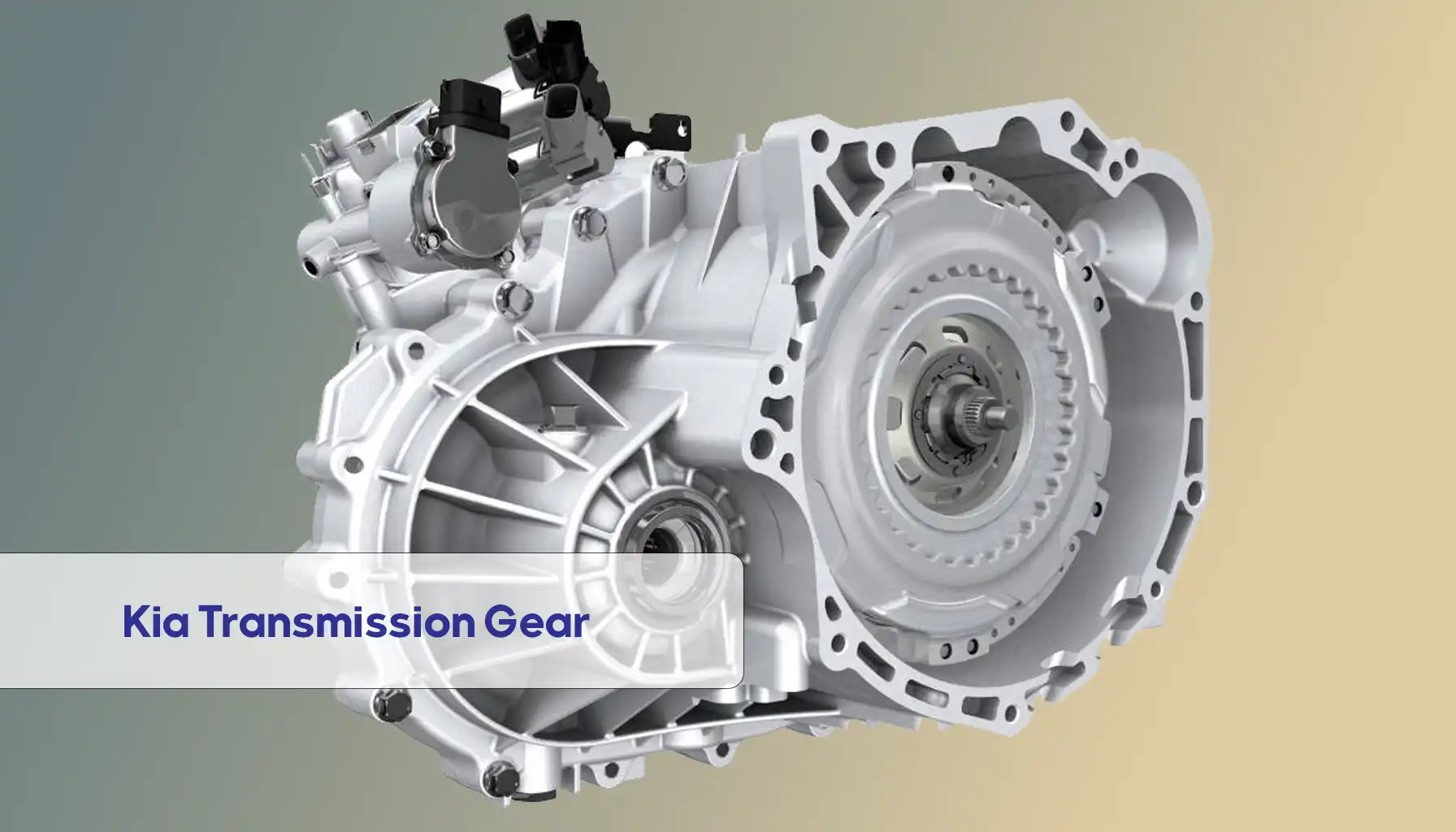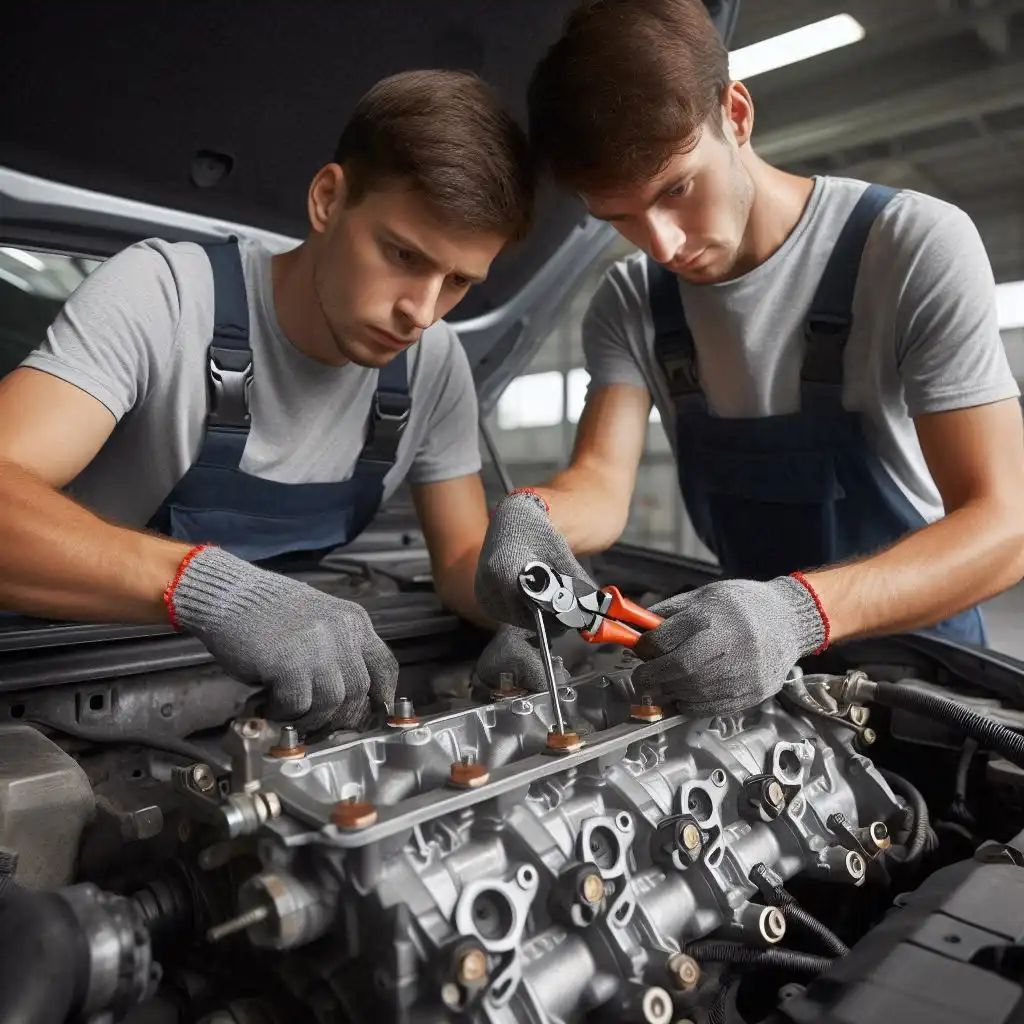The clutch disc is absolutely essential accessory in automotive engineering that every vehicle, especially those with manual transmission systems and automated manuals, needs to function smoothly. This little powerhouse plays a crucial role in the driving mechanism, which involves smooth gear changing and effective power transfer in vehicles such as Kia or Hyundai.
It is practical and would soon be seen as very essential for car owners to understand how the clutch disk works in order to prevent undue wear on the transmission system. All these might just end up making a huge difference in the performance life of a car for its owner and an equally greater difference in driving, as such.
What is a Clutch Disk and why it’s Essential Component of Your Vehicle
The clutch disc, which is also known as the driven plate, is one of the many important components in the transmission system of a vehicle, particularly a manual transmission. Basically, it acts as a bridge between the engine and the transmission to smoothly transfer power from the engine into the wheels. Without this crucial piece, shifting gears would have been just like wading through quicksand, and the driver trying to get proper control of the vehicle.

The clutch disc is a part of the dry, single-disc, friction clutch system used in Hyundai and Kia vehicles. This clutch type operates through friction produced between the clutch disc and other entities like the flywheel and pressure plate.
Upon engagement, the clutch disc clamps against the flywheel, allowing power transfer from the engine to the transmission and, consequently, to the wheels. When disengaged, the disengaged disc separates from the flywheel; hence, the flow of power is cut off, which permits the driver to change gears smoothly. Basically, understanding how it works is important for any person who wants to know how manual cars work.
A clutch disk is commonly made of high-friction material that can withstand a lot of heat and pressure. It wears out over time, though, and might need replacement. This is very important to Hyundai and Kia owners regarding monitoring the clutch for its wear, since the inability to address early may result in very expensive repairs.
Arsintrading deals in all types of automotive components; thus, this is the ideal place to buy transmission parts in Dubai. Be it a completely new transmission system or any particular parts your car requires for repair, Arsintrading assuredly provides high-quality products with international standards guaranteed. We have a huge inventory whereby customers can comfortably access various transmission parts that would go well with different models and brands of vehicles to keep those cars running efficiently and effectively.
How are Clutch Disks Attached to the Shaft? Understanding the Critical Connection
The clutch disk is not a single entity but rather part of a much bigger system that works together to ensure a comfortable ride. In Hyundai/Kia vehicles, the clutch disc is mounted on the input shaft of the transmission, typically by splines that enable the disk to move freely up and down the shaft. This attachment enables the clutch disc to travel with the output of the engine while allowing flexibility during disengagement whenever the driver presses the clutch pedal.

When the clutch pedal is pressed, hydraulic pressure is produced, which actsuates the slave cylinder. This component in turn travels the release bearing that pushes the pressure plate from the clutch disk. It is this disengagement that uncouples the engine from the transmission to allow the driver to shift gears. Releasing the clutch pedal reverses the process: The release bearing moves rearward, pulling the pressure plate away, and the clutch disk again presses against the flywheel, the power route again directed toward the wheels.
It is all within a few seconds and is an engineering miracle that gives the driver the required amount of control with view to his vehicle. To the owners of Hyundai and Kia cars, such understanding helps in their maintaining of the car, as a failing clutch disc can result in poor shifting, strange noises, or even complete transmission failure if left unattended on time.
Read More: Kia Soul Clutch Issues
Are Clutches Universal?
While performing the same basic function in every respect, clutches are not universal-between different vehicle types. Each clutch is designed for the model it will eventually serve, and such is the case with Kia and Hyundai vehicles, too. Such factors as engine power, vehicle weight, and intended use determine a particular clutch system’s design and materials.
You may need to read: How to Replace the Kia Spectra Clutch Disk
Obviously, the clutch that would feature in some high-performance Hyundai or Kia model-listen as I refer to the Kia Stinger and Hyundai Genesis-would be rather different from the one intended for smaller, economically-minded vehicles, such as the Kia Rio or Hyundai Accent. Whereas performance-type cars require heavier-duty clutches to manage higher torque and more aggressive driving, regular commuter cars sacrifice the extremes of performance for smoothness and longevity.

Besides, different models of the same brand also have differences in clutch designs due to the difference in transmission systems, driving modes, and even market demands for geographical reasons. Consequently, although their basic function remains identical, the specific components-like the clutch disk-are far from universal and should be absolutely matched with the requirements of the vehicle.
For Kia owners, Arsintrading is also where one can get Kia genuine-quality spare parts. The company specializes in offering genuine and top-grade replacement parts for all models of Kia to ensure your vehicle’s longevity and optimal performance. From engine components down to exterior accessories, we will provide parts that have durability and precision, allowing Kia owners to be confident in taking care of or repairing their vehicles.
Dual Disk Clutch: What is it and Are They Noisy?
The higher-order setup would be the dual disk clutch system, seen on high-performance or heavy-duty vehicles. Instead of one clutch disk, it utilizes two, greatly increasing friction area and thus allowing much more power without slipping the clutch. This is normally not seen on normal everyday vehicles-such as most of the Hyundai and Kia models-but it may be present in the performance versions or applications that are classed as heavy duty.
A twin-disc clutch mainly has an advantage of handling higher torque level without increasing the size of the individual clutch components. It enables better power transmission to help sports cars or trucks function more professionally. However, it is noisier at times compared to single disk clutches, especially when disengaging. It can also be a bit noisy, like a slight rattling or humming, especially when additional components and friction between multiple disks are involved.
In performance models of Hyundais and Kias, dual disk clutch noise is normally minimal due to sound-dampening techniques and judicious engineering. Those drivers of vehicles with dual disk clutches that have been upgraded or otherwise modified by an aftermarket may find the noise more noticeable, but this is normal and generally part of the trade-off with such higher-performance systems.
Does a Clutch Require Fluid?
Most of the modern vehicles’ clutches, including Hyundai and Kia, have hydraulic fluid inside them to smoothen the process of operation. A clutch system would include hydraulic cylinders filled with clutch fluid, usually brake fluid, in master and slave cylinders. This hydraulic fluid transfers force from the clutch pedal to the clutch components for smooth disengagement and engagement of the clutch disk.
The hydraulic fluid is crucial in operating a problem-free clutch system. Low or contaminated fluid levels may cause difficulty in gear changing, a spongy clutch pedal, or total clutch failure. It is from this perspective that the regular check of clutch fluid level and ascertaining whether the fluid is clean are the starting-point pre-requisites for any Hyundai or Kia owner. The hydraulic fluid over time will absorb moisture and degrade; therefore, it has to be replaced occasionally for the clutch performance to be at an optimum.
Fluid checks have been included in vehicle maintenance by owners, especially those with manual transmission models of Hyundai/Kia. The fluid replacement shall be done in conformance with one’s model and in a manner that would prevent early wear on the clutch system by following the prescribed schedule.
Conclusion
Every owner of these vehicles, mostly those owning a manual or automated manual transmission car, should thus have an understanding of the clutch disk in function and maintenance. In facilitating smooth power transfer from the engine to the transmission for precision in control and effectiveness in gear changes, the clutch disk is an important component. While the clutch itself might not be universal and can differ far from one model to another, the basic principles will be the same for almost all vehicles. Monitoring the wear and tear in a clutch closely, checking hydraulic fluid levels, and listening for unusual noises are just some ways to ensure a healthy clutch system, which can extend the life of your vehicle and keep driving smooth.



